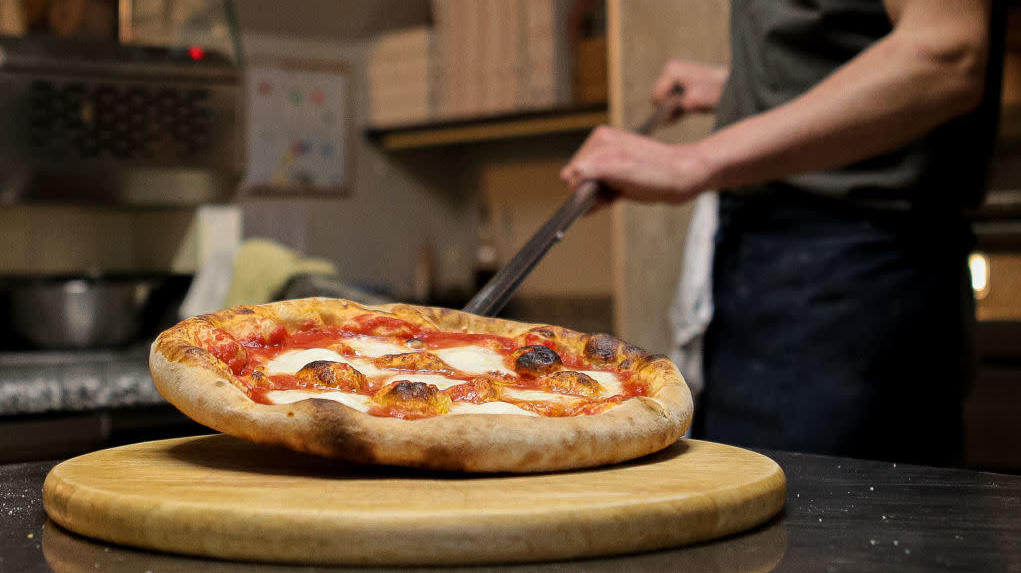How One Restaurant Scammed DoorDash And Made A Tidy Profit
"Let me start this newsletter with a story about Pizza Arbitrage."
So begins an article published on Sunday in Margins, a Substack newsletter by Ranjan Roy and Can Duruk about the intersection of business and technology. We all know that food delivery apps have business practices that could be described as shady at best, predatory at worst—but what can a restaurant do about it, besides refuse to play the game? Roy describes himself as a "combination trader and startup person," so when a friend of his who owns several pizza restaurants confronted him about his restaurants' issues with DoorDash, Roy decided to try turning the tables on the third-party delivery app and game the system to make the restaurant come out on top.
Here's how it happened: Roy's friend (who remains anonymous, as does the name of his business) had always, always avoided offering delivery from his restaurants, because he chose to focus on the dine-in experience. He never entered any agreement with any third-party app to allow orders through their service. This didn't stop DoorDash from listing a delivery option for his pizza restaurants, though, and it resulted in orders that made customers unhappy. The pizzas they ordered for delivery through DoorDash would arrive cold, because the DoorDash drivers picking them up from the restaurant didn't have the proper heat-retaining bags to transport them.
Cold pizzas weren't the only issue: the restaurateur noticed that DoorDash was listing incorrect prices for the pizzas. Roy determined that this was because DoorDash automatically scrapes restaurant website data to gather price information, and its technology had misread the menu on the pizza restaurant's site; consequently, a specialty pizza that costs $24 was being listed in DoorDash as $16, the cost of a plain cheese pizza.
Here's where the arbitrage comes in: Even though DoorDash lists the pizza for $16, the DoorDash driver picking up the pizza from the restaurant will still pay $24 upfront—because that's its actual price. So Roy and the restaurant owner opened up DoorDash and ordered 10 pizzas from his own restaurant at $16 each (they had them delivered to a friend's house). They were charged $160 in this transaction, but the DoorDash driver paid $240 for the pizzas. After the cost of the order and the expenses of making the pizzas, though, the restaurant owner made only $10 in pure profit from this scam.
So here's how they gamed the system for more: by virtually eliminating production costs. If you're delivering the pizzas to yourself, and you know that you, as the end "customer," won't complain about a messed up order, then why actually make a pizza at all? Just fill the boxes with dough and call it a day! Once the restaurant owner did this, the profits on a 10-pizza scam shot up from $10 to $75. "If you did this a few times a night," Roy explains, "you could start to see thousands in top-line growth with hundreds in pure profit, and maybe you could do this for days on end."
You might be wondering why DoorDash never caught on to this scheme. There are several reasons for this, but the company's recent round of $400 million in funding definitely has something to do with it. Says Roy of DoorDash, "it was among the WeWorkian class of companies that, for me, represented everything wrong about startup evolution through the 2010s. Raise a ton of money, lose a ton of money, and just obliterate the basic economics of an industry." Indeed, seemingly all third-party delivery apps are currently losing money at a time when you'd think they'd be making huge profits on a nation unable to dine in at their favorite restaurants. Instead, it's the apps' failures that are being subsidized by venture capital firms, not their successes.
"The more I learn about food delivery platforms, as they exist today, I wonder if we've managed to watch an entire industry evolve artificially and incorrectly," says Roy. Read the whole article here.
